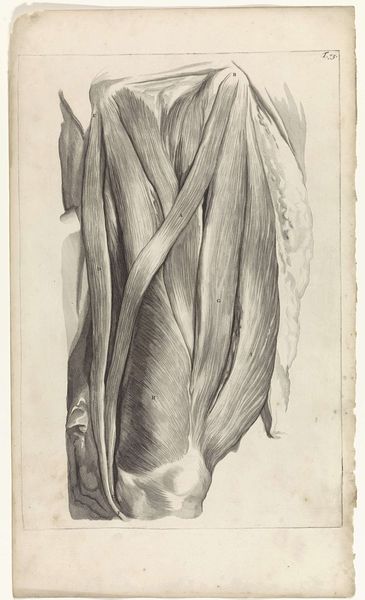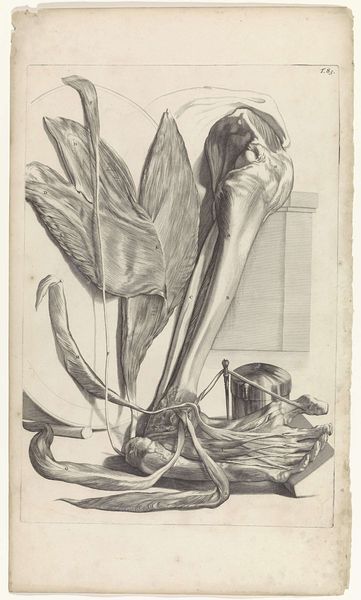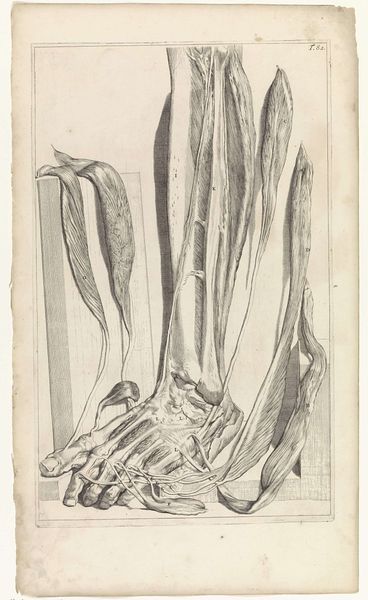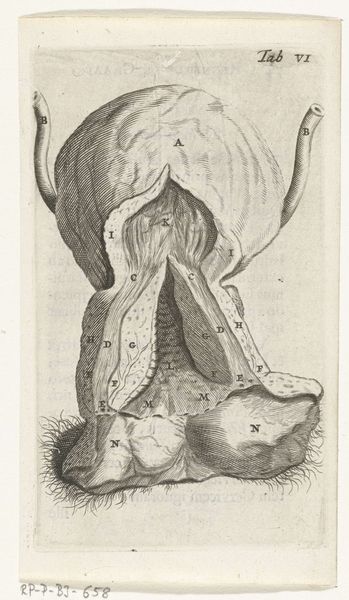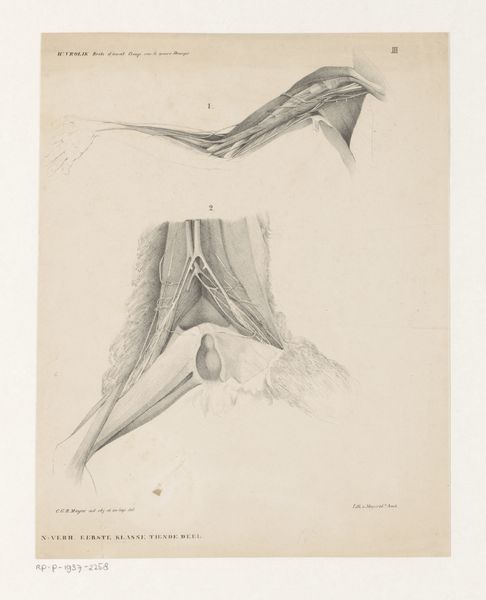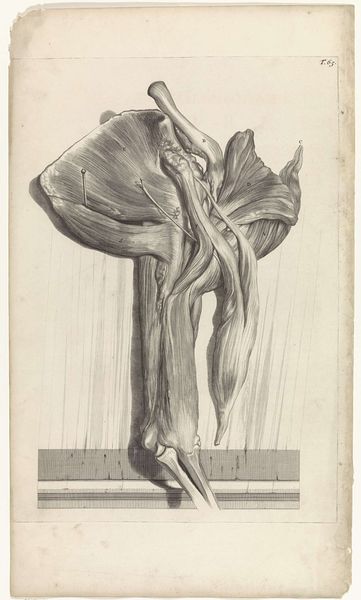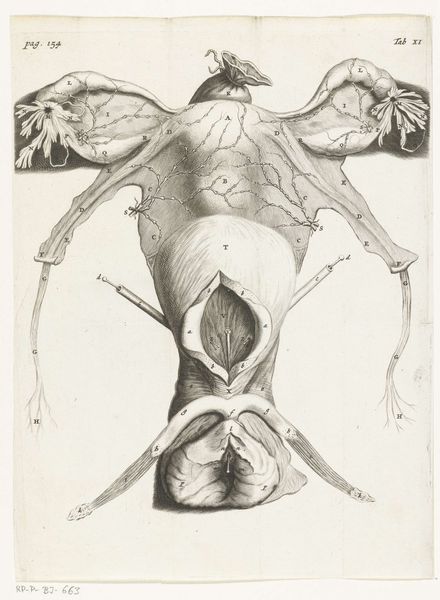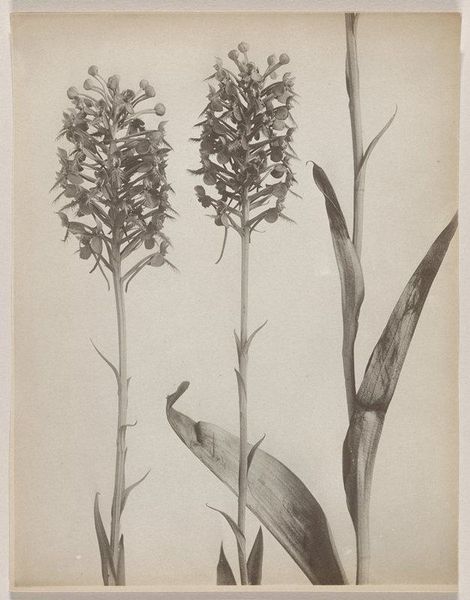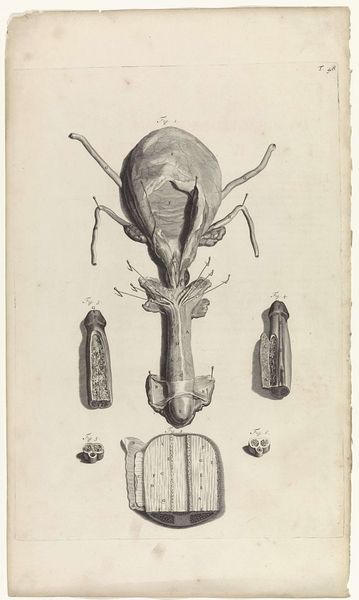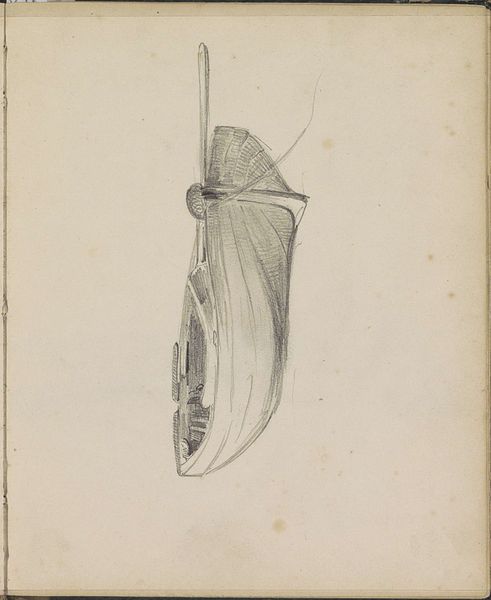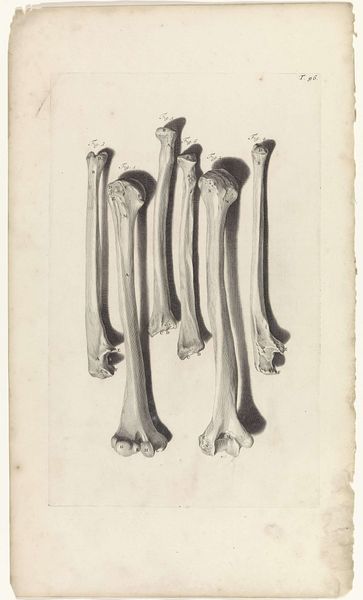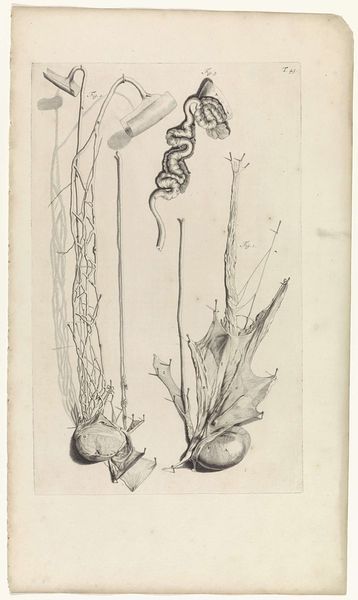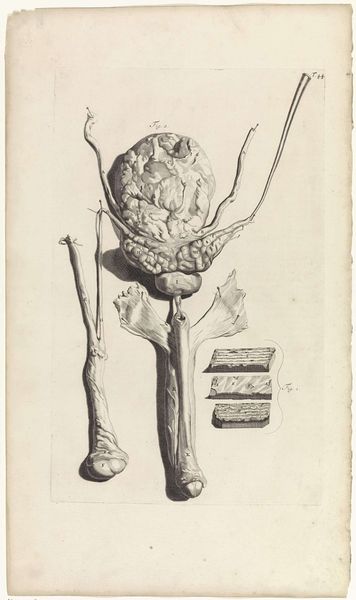
drawing, print, engraving
#
portrait
#
pencil drawn
#
drawing
# print
#
pencil sketch
#
figuration
#
pencil drawing
#
history-painting
#
academic-art
#
engraving
#
realism
Dimensions: width 300 mm, height 499 mm
Copyright: Rijks Museum: Open Domain
This is Pieter van Gunst’s “Anatomische studie van de achterkant van de linkervoet,” made in the late 17th and early 18th century. It meticulously captures the complex architecture of the human foot. But this image is more than just an anatomical study; it taps into a deep, primal fascination. The exposed musculature, rendered with such precision, echoes the flayed figures in Renaissance art, reminiscent of the morbid curiosity found in anatomical theaters of the period. Think of Marsyas, his skin torn away, a symbol of human suffering and hubris. Here, the foot becomes a landscape of the self, stripped bare. The image’s power lies in its ability to evoke a sense of vulnerability. Like the figures in ancient mystery cults, it reminds us of our mortality, and engages viewers on a subconscious level. It's a memento mori, a dance with death, rendered not as a grand spectacle, but as an intimate study of the very foundation upon which we stand. The cyclical nature of knowledge and fascination repeats, as symbols resurface, evolve, and take on new meanings across history.
Comments
No comments
Be the first to comment and join the conversation on the ultimate creative platform.
